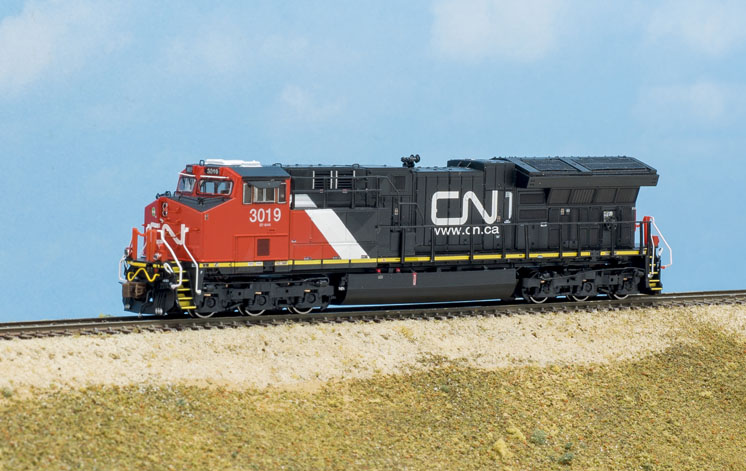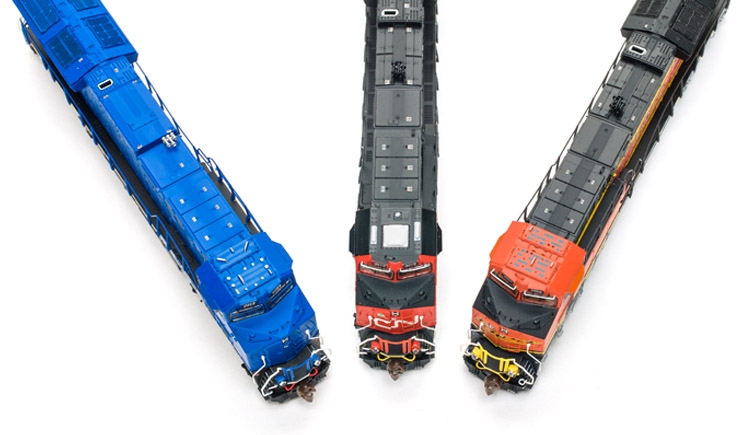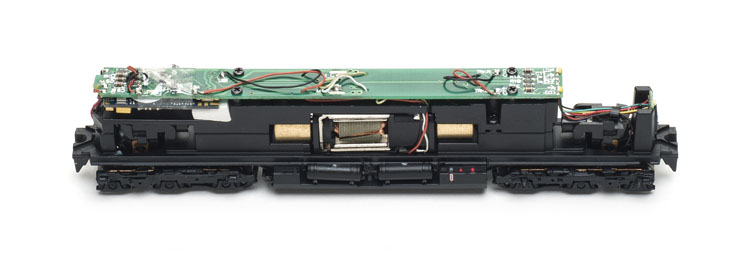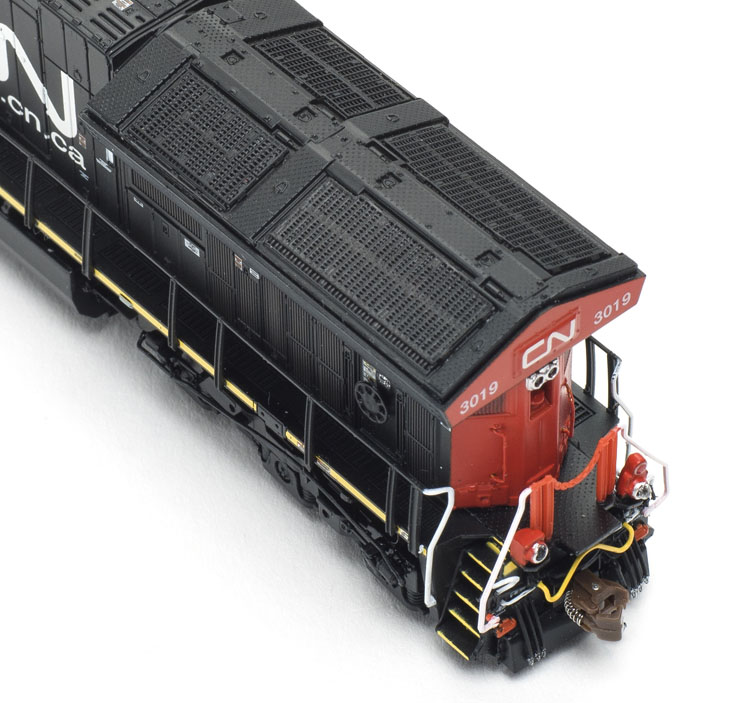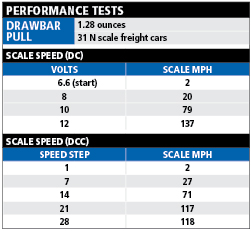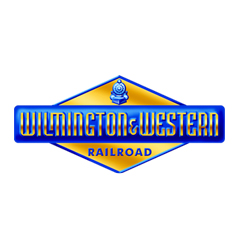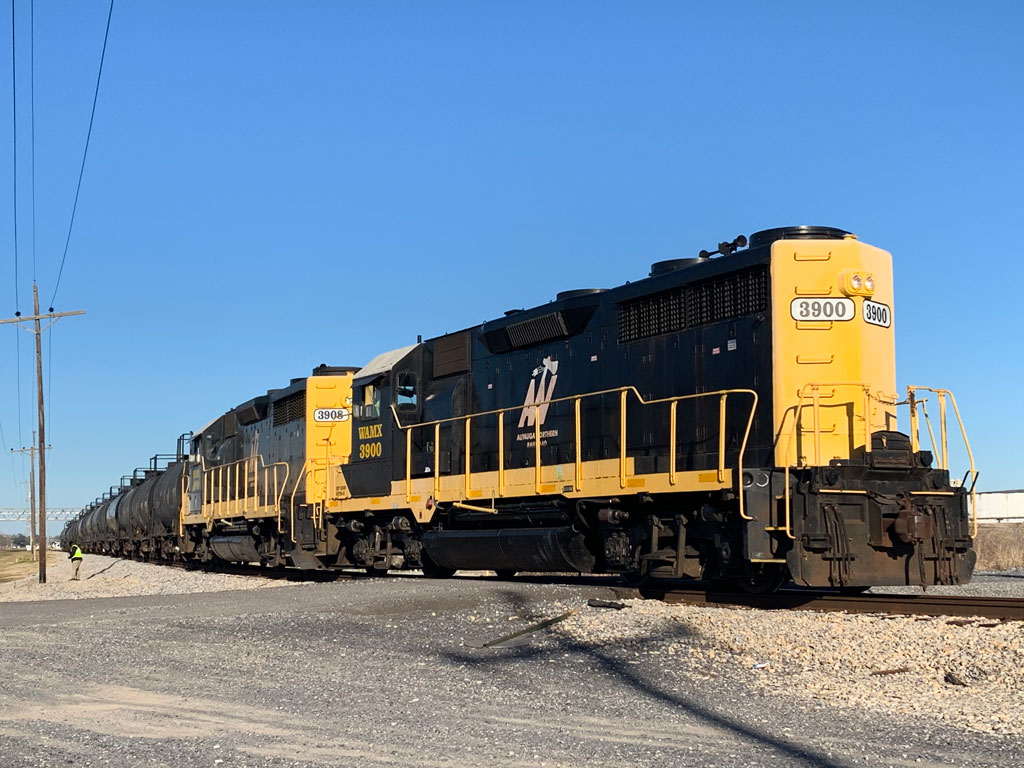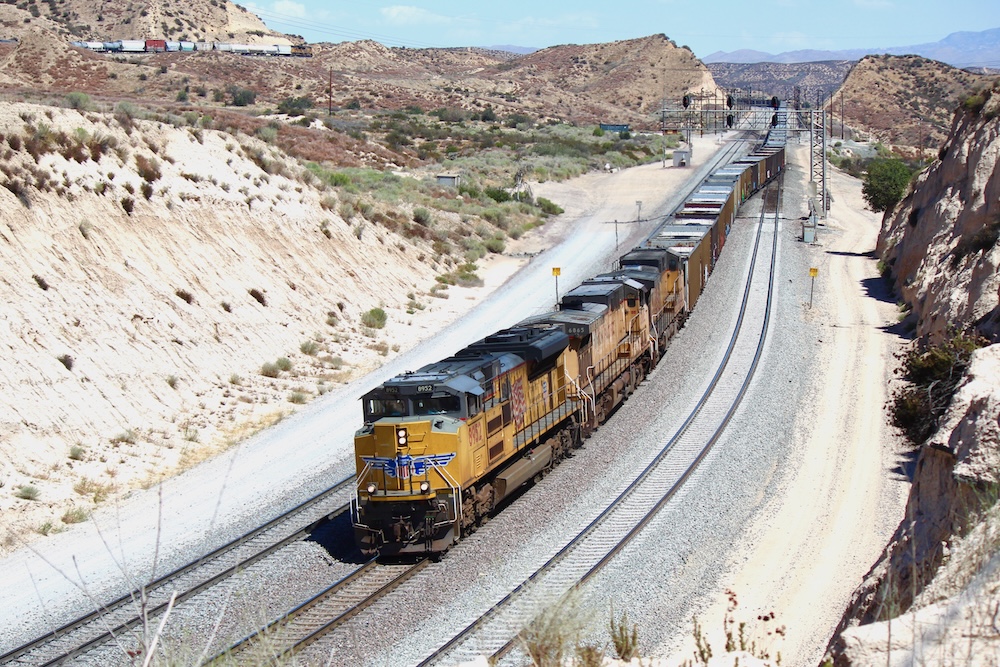ScaleTrains.com brings the modern era to N scale with its General Electric (GE) Tier 4 GEVo diesel locomotives in several variations. The Rivet Counter line model features railroad-specific details, factory-installed and painted wire grab irons, and light-emitting-diode headlights and ditch lights.
Going green. The ET44AC is part of GE’s Tier 4 lineup of diesel locomotives, including the ET44AC (Canadian National and Norfolk Southern), ET44AH (CSX), ET44C4 (BNSF Ry.), and C45AH (Union Pacific). The locomotives are compliant with the Environmental Protection Agency’s emission standards that went into effect in January 2015.
The full-size locomotive is 74′-6″ long and 16′-1″ tall from railhead to the top of the antennas. It features a GE GEVO-12 engine with 12 V-type cylinders. The ET44AC features a C-C axle configuration, while the ET44C4 has an A1A-A1A configuration (each truck has two powered axles with a center idler axle).
The safety cab design on the ET44AC is similar to that found on AC4400 and Dash-944CW diesels. The distinguishing feature of GE’s Evolution Series locomotives are the radiators at the back of the long hood. Though the radiators overhang the walkway like earlier six-axle GE road locomotives, the new ones are taller and look like an upside-down V.
Our sample is decorated as Canadian National no. 3019, part of the railroad’s 3000 through 3039 series built by GE at its Erie, Pa., plant between July and September 2015.
In GE terminology the locomotive is an ET44AC, but on CN it’s an EF-644t. What does the alpha-numeric code mean? E stands for General Electric, F indicates freight service, 6 is the number of axles, 44 is the horsepower (x100), and t indicates the subclass.
ScaleTrains.com offers the CN ET44AC in six road numbers and two versions. Units 3019 and 3000 are based on the 2015 prototype with a square exhaust compartment roofline. The other four numbers have an angled roofline in the same area. All of the CN models have operating front and rear ditch lights, a rear rock pilot, and tinted side cab windows.
The model’s dimensions closely follow prototype drawings published in the Trains magazine special issue Locomotive 2017. The lettering and detail placement matches prototype photos of no. 3019 that I found online. The two vertical handrails on the back of the hood should be white, not red. This is an easy fix with paint and a fine brush.
The paint on the model is smooth and evenly applied, with crisp separation lines between colors. The model has several appropriately placed labels on the sides, ends, and roof. Some are legible under magnification, others aren’t.
Strong puller. Our sample features a dual-mode ESU LokSound Next18 Select sound decoder. I tested the model in Digital Command Control using an NCE PowerCab. In 28 speed steps, the locomotive crawled along at 2 scale mph at step 1. The model achieved a top speed of 118 scale mph at step 28. That’s nearly 50 mph faster than the prototype’s maximum speed.
I was able to achieve a more realistic high speed by adjusting Configuration Variable (CV) 5. From the factory, CV5 is set to 255. After some trial and error, I set CV5 to 86 to achieve a top speed of 70 scale mph.
The decoder also features ESU’s Full Throttle diesel sound and effects package. Function 9 is set up for Drive/Hold, which allows users to set the model’s speed and adjust the engine rev independently with the throttle. Function 4 controls the dynamic brakes, which works when the locomotive is moving. Function 11 is the independent brake.
I used a Model Rectifier Corp. Tech 4 power pack to perform the direct-current test. The sound effects started at 6V, and the model moved at 2 scale mph at 6.6V. At 12V, the six-axle road unit achieved a top speed of 137 scale mph.
The ScaleTrains.com model has a drawbar pull of 1.28 ounces, equivalent to 31 freight cars on straight and level track. The real test came when I put a 25-car train of modern freight cars behind the N scale model and had it climb the helix on our Canadian Canyons project layout. The wheels slipped in a few spots, but the locomotive never stopped moving and it ultimately made it to the top of the nearly two percent grade. Quite impressive!
We see a steady parade of ET44AC diesels passing through Waukesha, Wis., on the Canadian National. ScaleTrains.com did a great job capturing the lines of the prototype. The model looks spectacular crossing Cisco Bridge on our Canadian Canyons layout. The sounds of the GEVO-12 engine echoing in the tunnels and off the canyon walls transports us to British Columbia without having to leave the workshop.
Price: Direct-current model with ESU Next18 connector, $124.99; with dual-mode ESU LokSound Next18 Select Micro sound decoder with Full Throttle, $204.99
Manufacturer
ScaleTrains.com
7598 Highway 411
Benton, TN 37307
www.scaletrains.com
Era: 2015 to present (as decorated)
Road names: Canadian National, BNSF Ry., CSX, General Electric demonstrator, Norfolk Southern, and Union Pacific. Six road numbers per scheme.
Features
All-wheel drive and electrical pickup
Body-mounted plastic semi-scale E Type couplers, mounted at correct height
Directional light-emitting-diode headlights
Five-pole skew-wound motor with dual flywheels
Illuminated number boxes
Weight: 4.0 ounces





